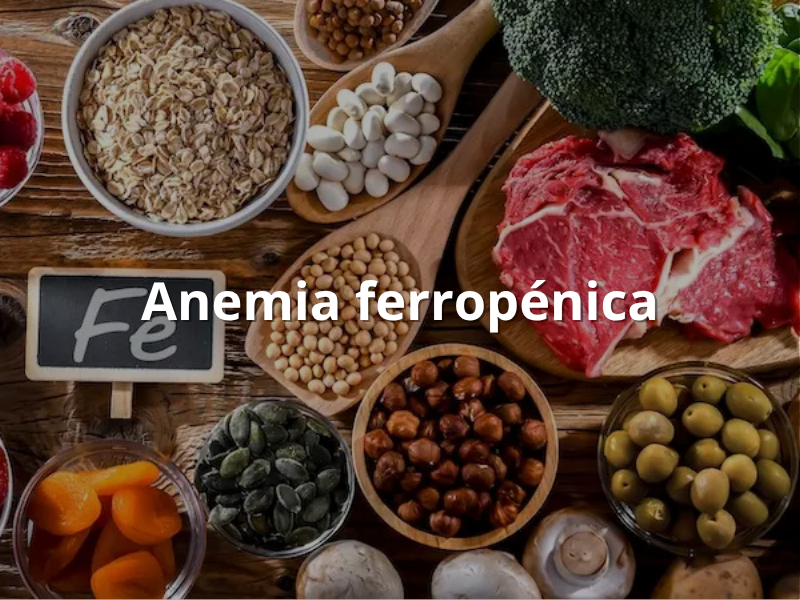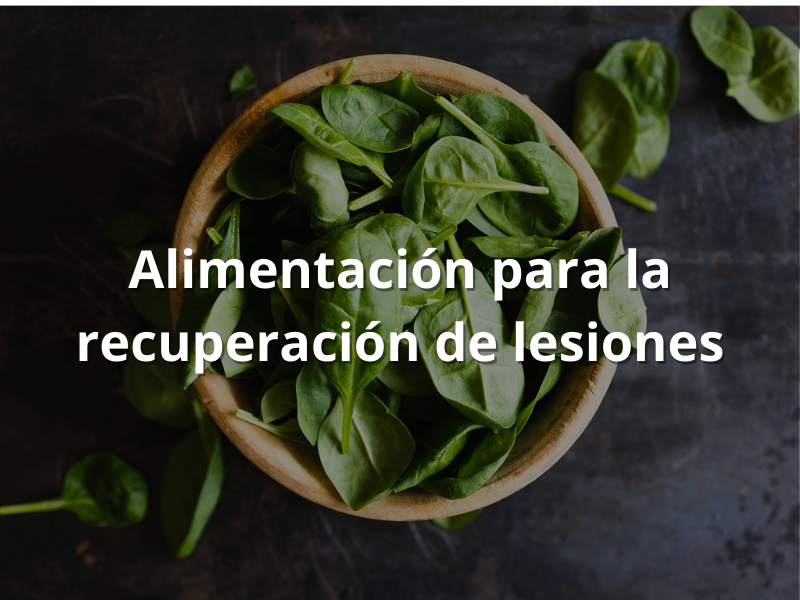Ferropenic anemia: Everything you should know

Ferropenic anemia: How to improve iron absorption naturally iron is essential to produce hemoglobin, protein that transports oxygen in the blood. However, Many people - especially women - do not absorb enough amount, what can cause ferropenic anemia, One of the most common nutritional deficiencies. Symptoms range from fatigue and difficulty concentrating to pale or brittle nails. Fortunately, Improving iron absorption with some simple habits is possible ... and without supplements in many cases! ⚙️ Iron types: Do everyone absorb the same? In food we find two types of iron: HEMO iron: is in red meat, Fish and seafood. Is the one that is best absorbed (15-35%). Iron No Hemo: Present in lentils, spinach, Tofu or whole cereals. Its absorption is lower (2-20%). That's why, People with vegetarian or vegan diets should pay special attention to how food combines to optimize iron absorption. Why does iron cost so much absorb? Although a diet contains enough iron, There are people who present difficulties to absorb it effectively. This may be due to several factors: From digestive problems such as atrophic gastritis, celiac disease or irritable intestine syndrome, even alterations in the acidity of the stomach, which is necessary to release and transform iron into an absorbable form. Besides, Prolonged use of antacids, Bariatric surgery or aging can reduce intestinal absorption capacity. That's why, It is not always enough with "eating more iron": It is key to understand and address the individual factors that are affecting absorption. Iron -rich foods 🥩 foods of animal origin rich in hemo (High absorption) Liver (of veal, pollo, pig) Red meat (veal, cordero) Turkey and chicken (especially thigh) Fish (Sardinas, tuna, salmon) Seafood (clams, mussels, cockle) 🌱 Foods of plant origin rich in non -hemo (lower absorption) Kale spinach spinach chickpeas lentils (kale) Pumpkin and sesame seeds nuts (almonds, anacardos, Pistachos) Pan and Fortified Bread and Cereals Fortified Caña Moaf (The difficulty) Iron absorption ✅ practical counselo: Always combine iron -hemo -rich foods with vitamin C sources to multiply its absorption. For example: Lentil salad + Limón shed tafu sauteed + Ausa red pepper + strawberries, mandarin or kiwi 🚫 on the contrary, Try to avoid certain foods during the main meal, since they inhibit iron absorption: The coffee (tannins) Dairy (soccer) Red wine (polyphenols) The solution is not to eliminate them, but space them in time: wait 1-2 hours to have that coffee after eating. 🍊 Foods rich in vitamin C. (To combine with the previous) Oranges, Mandarins, Kiwis Strawberries Red and green peppers broccoli raw tomato lemon juice ✅🍳 Cooking techniques that favor iron Some gestures in the kitchen can make a difference: ✅ Soak or germinate legumes and cereals: reduce fitatos (Iron inhibitors). ✅ Cooking with cast iron pans: It brings small amounts of iron to food, especially if they are acids (like tomato or lemon). ✅ Fermented vegetables: How Tempeh Miso, They decrease antinutrients and favor absorption. ❌ Avoid destroying vitamin C by cooking: Vitamin C is very sensitive to heat, so it is easily lost during cooking. To make the most of its effect, It is better to consume rich foods in this crude vitamin or add them at the end of the preparation. For example, You can add fresh peppers to a lentil salad or squeeze lemon juice on the plate just before serving. Should I take iron supplements? Before resorting to supplements, It can be interesting to assess whether your habits are the most appropriate and if with a slight change you can regulate iron levels. In Laugan Getxo, We value your individual case and help you recover your iron levels with personalized strategies. Because good nutrition should not be based on restrictions, but in informed decisions. I leave you a couple of links that talk about the same 🤓: 📍 How to avoid anemia – NIH: National Institute of Health 📍 Iron in the diet – Medlineplus do you need help? If you have symptoms like fatigue, Frequent weakness or dizziness, You could be facing mild ferropenic anemia without diagnosing. And with a few settings in your diet, You can recover your energy. 👉 Ask for your appointment in Laugan and discover how to adapt these tips to your food and lifestyle. Contact us 📞
Food for improving injury recovery: That, When and how to eat?

Food for injury recovery What, When and how to eat? When we suffer an injury, either muscular, bone or articular, Our body needs specific nutrients to repair damaged tissues. Food can accelerate or delay this process and, Unfortunately, Many people neglect this crucial aspect during recovery. That is why we come to shed light in this matter. Food and injury proteins are bricks that rebuild muscles and tendons. But it's not just about quantity, but of quality and distribution. Include a complete egg protein source, fish, lean meat or legume combinations with cereals ensures a constant supply of amino acids. Leucine, abundant in milk serum, Eggs and meats, It is particularly important for its role in muscle synthesis. For those who prefer plant options, soy, Chickpeas and Quinoa are excellent alternatives. Omega-3 fatty acids present in salmon, Chia nuts and seeds modulate inflammation. Combine them with foods rich in antioxidants (berries, turmeric, has green) Create an ideal environment for repair. A simple trick: Add a pinch of black pepper to turmeric multiplies by 20 The absorption of its active substance, at Curcumina. The collagen, especially hydrolyzed collagen peptides, It has demonstrated benefits for the recovery of tendons and ligaments. You can find it naturally in bone broths or as a supplement. Minerals like zinc (oysters, pumpkin seeds) and magnesium (spinach, almonds) They also play key papers in healing. Hydration is another frequently forgotten pillar and as Laugan Getxo nutritionist I don't get tired of repeating it. Water is necessary to transport nutrients to damaged cells and remove waste. A practical way to monitor it is to observe the color of urine: It must be clear yellow. In our center, We design plans that take into account the type of injury, your level of activity and, of course, Your food preferences. Because recovering does not mean hungry or eating tasteless foods. If you think we can help you, 📍 Reserve your appointment here . You can consult the full article in the Journal of the International Society of Sports Nutrition for more details: Jissn – Nutrition for Injury Recovery. Are you injured and you don't know where to start? We work from an updated and personalized approach. If you have pain or are in the process of recovery, We can help you go back with confidence and recover better.
